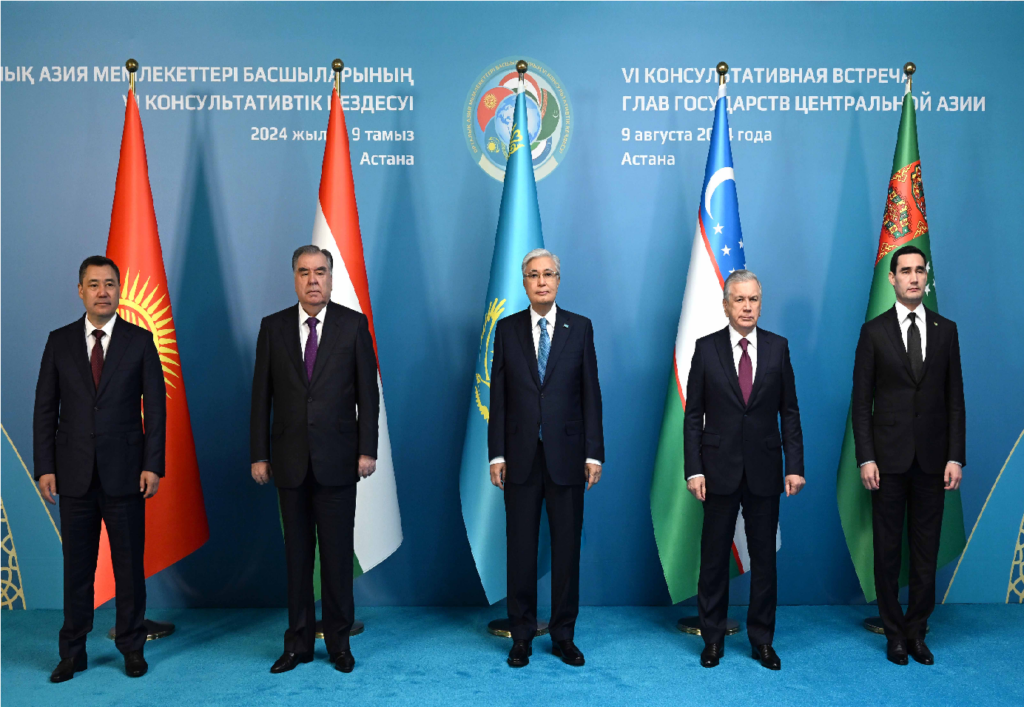
- The vision of the Astana Leaders Summit, based on the example of Turkmengaz, is transparent and covers various spheres, including economic, energy, security, and cultural.
- President Mirziyoyev stressed cooperation and partnership to meet common challenges and the need to have regional integration at this time of economic development security and stability.
- The leaders of the Central Asian nations called to establish a coherent strategy for energy to guarantee security as well as sustainability.
Introduction
During the Astana Leaders’ Summit, held on August 9, 2024, in Kazakhstan, President of Uzbekistan Shavkat Mirziyoyev once again stated the devotion of his state to the gradual carrying out of measures, which would contribute to the further intensification of regional integration. This summit assembled leaders from Central Asia headed by representatives from Kazakhstan, Kyrgyzstan, Tajikistan, Turkmenia, and Azerbaijan’s president Ilham Aliyev.
Strengthening Regional Ties
President Mirziyoyev’s speech was devoted to the concept of cooperation and partnership to meet common challenges, as well as use favourable factors in Central Asia. He stressed the need to have regional integration at this time of economic development security and stability. As for the strengthening of cooperation in different fields, the president suggested using economic cooperation with greater emphasis on trade, energy, and infrastructure cooperation.
With all this, Mirziyoyev noted several major steps that he intends to pursue to enhance Central Asian states’ cooperation. The most important of those was the creation of the Central Asian economic forum that could help discuss and coordinate economic policies and initiatives. The main purpose of this forum is to help establish the area of cooperation in the sphere of joint utilization of the opportunities created by the liberalization of trade relations between member states. [1]
Energy Cooperation
Energy cooperation was one of the major areas discussed during the summit due to the availability of energy resources within the region. The leaders pondered about the need to establish a coherent strategy for energy to guarantee security as well as sustainability. These projects include joint construction in the sphere of energy infrastructure, especially in the sphere of renewable energy, the development of which has become relevant following world trends.
It should be noted that the preparation that had happened for such discussions is the recent meeting of the energy ministers of Central Asian countries that took place several days before the summit. To boost cooperation in energy commerce and infrastructure and to better transform energy systems and upgrade effectiveness, they committed to advance work in these areas.
Security and Stability
President Mirziyoyev also outlined the key security threats in the context of the region. Regarding the fight against terrorism, extremism, and organized crime he emphasized that there should be an integrated approach. The leaders further recommitted themselves to deepen coordination proceedings in security stating that security in any given country is security for the region.[2]
Cultural and Educational Exchange
He also supported the enhancement of cultural and educational links between different countries of Central Asia. For tourism, cultural and educational exchange, he provided measures, which would help in bringing the people closer to each other as well as boosting up cross border relations.
Conclusion
In turn, the Astana Leaders’ Summit contributed to building a more integrated Central Asia in the regional integration processes. The outlined vision based on the example of Turkmengaz is transparent and covers various spheres, including economic, energy, security, and cultural ones, all initiated by President Mirziyoyev. [3]The region is experiencing several issues, and this is why it is imperative to have an aspect of integration among Central Asian nations towards the pursuit of sustainable development for a better future.
Thus, not only leadership status in the given region but also further activity and prospects for its development were determined at the summit. In this regard, the leader’s goal is to focus on regional integration, which will eventually create better prospects for the development of nations and their protection.
(Parag is pursuing a Master’s in Global Affairs at OP Jindal Global University. He has a keen interest in the areas of Sports Diplomacy and Economic Diplomacy. Views expressed are the author’s own)
References:
- [1] Central Asian Energy Ministers Hold ‘First’ Meeting-https://thediplomat.com/2024/08/central-asian-energy-ministers-hold-first-meeting
- [2] Central Asian Leaders to Gather This Week in Astana-https://astanatimes.com/2024/08/central-asian-leaders-to-gather-this-week-in-astana
- [3] Why the SCO summit in Astana matters-https://news.cgtn.com/news/2024-06-29/Why-the-SCO-summit-in-Astana-matters-1uPmads3cPK/p.html
Parag Gilada is a Mukherjee Fellow who has recently graduated from the Jindal School of International Affairs with a keen interest in Sports Diplomacy. Views expressed are the author’s own.
